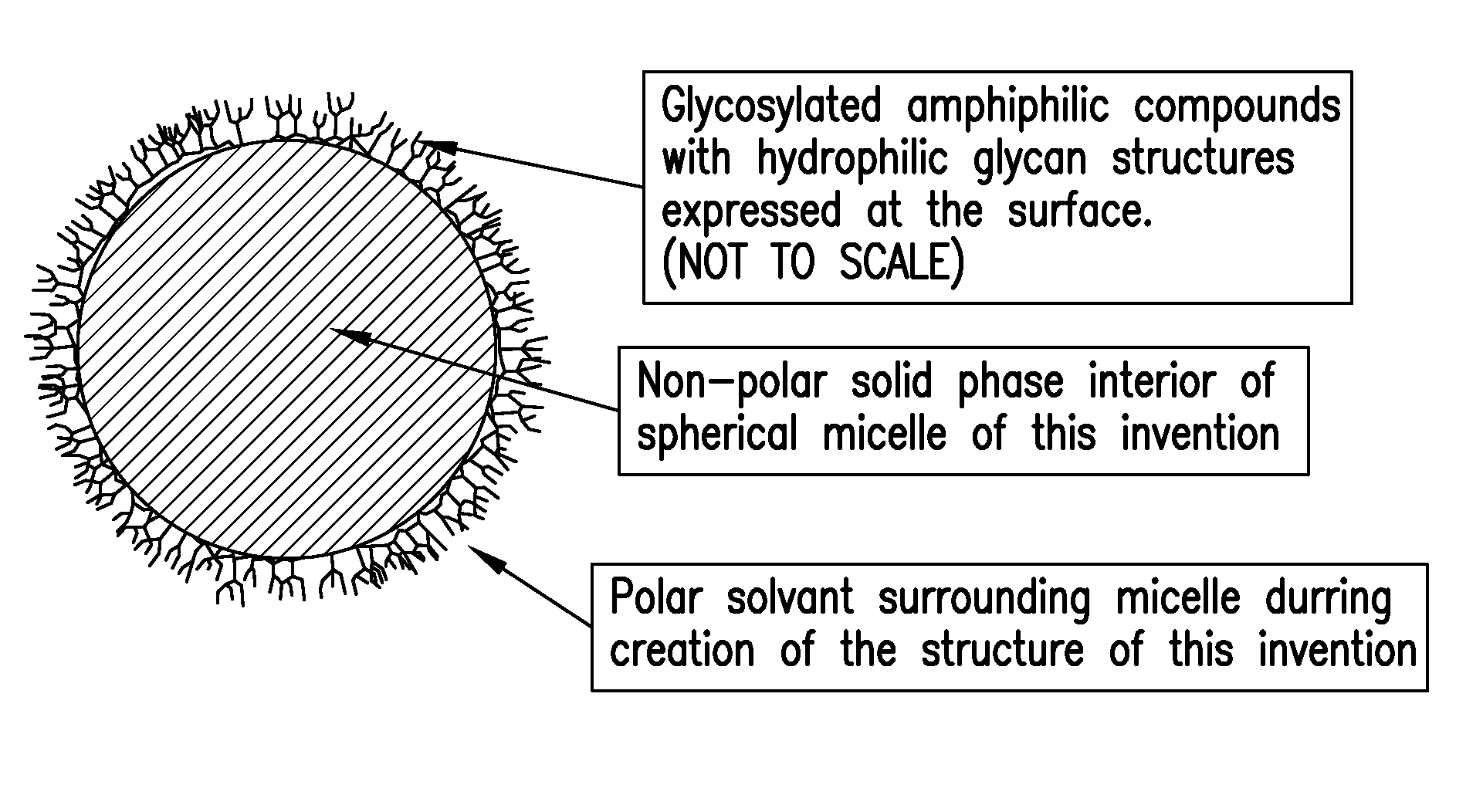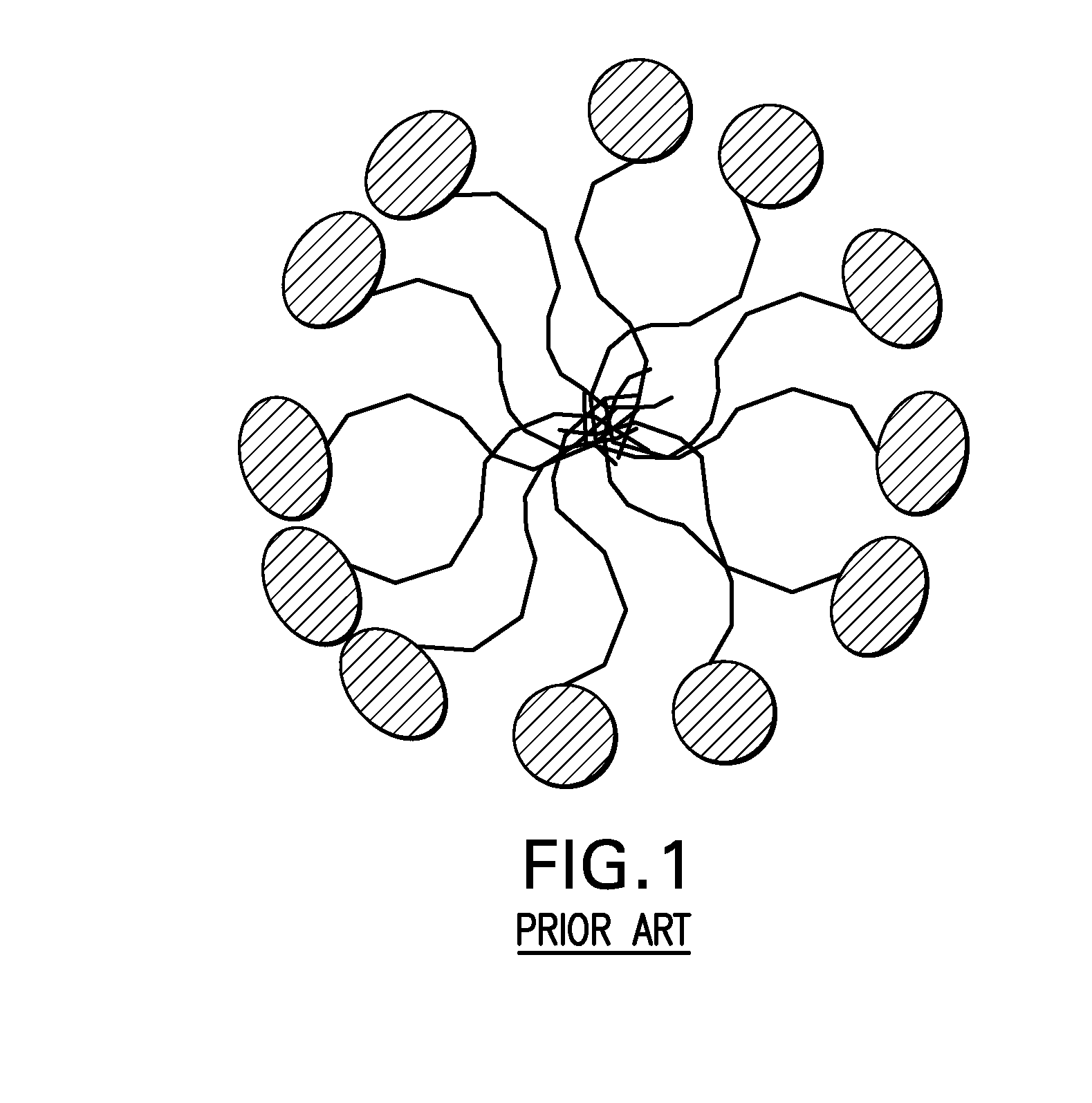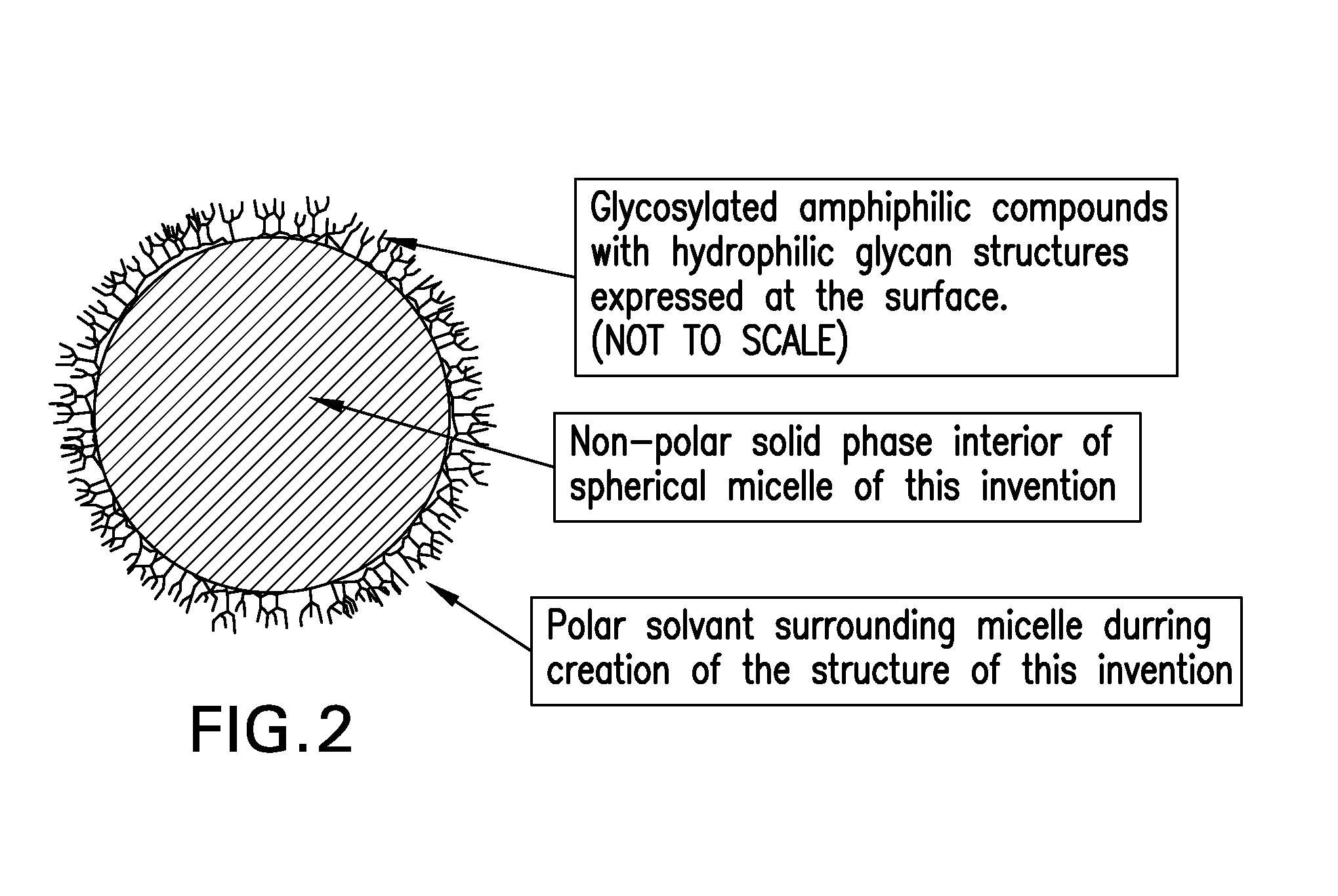Solid State Membranes with Surface-Embedded Glycosylated Amphiphilic Molecules and Micelles Formed Therefrom
- Summary
- Abstract
- Description
- Claims
- Application Information
AI Technical Summary
Benefits of technology
Problems solved by technology
Method used
Image
Examples
example 1
[0089]Paraffin wax (100 ml) was melted at a temperature of 70° C. Chicken egg white (50 ml) was dissolved in distilled water (400 ml) and the resultant mixture was filtered and then heated to 70° C. The melted wax was added to the egg white mixture, which was then agitated and quickly cooled to a temperature below 40° C. through the addition of chilled water. Glycoproteins recovered from chicken egg whites were embedded in the surface of paraffin wax in a manner that the wax formed micelles in the diameter range of 0.001 to 4 mm. The size range of glycoprotein covered spheres was found to be dependent in part on the degree of agitation just prior to the cooling step. The resultant spherical structures (i.e., micelles) were dried, rewetted, and exposed to fluorescent lectins. The lectins were found to successfully bind to the sugars on the embedded glycoproteins (FIG. 3).
example 2
[0090]A solution of yeast invertase and low density polyethylene (LDPE) was heated in an agitated pressure reactor to a temperature of 120° C. The solution was then cooled through rapid depressurization of the reactor followed by the addition of chilled water. LDPE micelles having surface embedded glycoproteins recovered from yeast invertase were thus formed, the micelles having a diameter ranging from 0.1 to 4 mm. The resultant micelles were dried, rewetted, and exposed to fluorescent lectins. The fluorescent lectins were observed to have successfully bound to the sugars on the embedded glycoproteins.
example 3
[0091]A water solution containing Tamm-Horsfall glycoproteins and carnauba wax flakes was heated to 98° C., until the carnauba wax melted and formed a continuous layer at the surface of the water solution. The solution was then allowed to cool to room temperature, at which point a solidified carnauba wax film was formed. The film was removed from the top of the remaining solution, rinsed under running water for 3 minutes and then allowed to dry. The resulting flat film comprised Tamm-Horsfall glycoproteins embedded in the surface of carnauba wax.
PUM
| Property | Measurement | Unit |
|---|---|---|
| Force | aaaaa | aaaaa |
| Amphiphilic | aaaaa | aaaaa |
| Centrifugal force | aaaaa | aaaaa |
Abstract
Description
Claims
Application Information
 Login to View More
Login to View More - R&D
- Intellectual Property
- Life Sciences
- Materials
- Tech Scout
- Unparalleled Data Quality
- Higher Quality Content
- 60% Fewer Hallucinations
Browse by: Latest US Patents, China's latest patents, Technical Efficacy Thesaurus, Application Domain, Technology Topic, Popular Technical Reports.
© 2025 PatSnap. All rights reserved.Legal|Privacy policy|Modern Slavery Act Transparency Statement|Sitemap|About US| Contact US: help@patsnap.com



